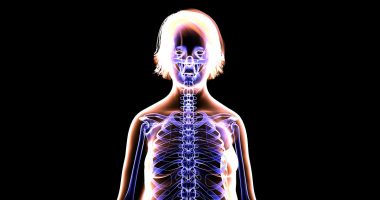Share this @internewscast.com
There is a quiet frenzy building around the latest wave of injectable weight-loss drugs, and none have garnered more attention than Mounjaro.
Also known by the generic name tirzepatide, Mounjaro is a dual-action medication that mimics two powerful gut hormones, GLP-1 and GIP, which together blunt appetite, regulate blood sugar and encourage the body to burn fat more efficiently.
Compared to earlier medications like Ozempic, Mounjaro is proving even more effective at sustained weight loss.
But while the weekly jabs continue to gain popularity, what is often overlooked is the biological mechanism behind them.
These drugs are not introducing something foreign to the body. They amplify hormonal signals already present in the body – signals that, importantly, can be nurtured through diet.
As a clinical nutritionist, I’ve seen firsthand how effective it can be to align the diet with these natural hormones. When we feed the body correctly, we can influence the same systems that drugs like Mounjaro target, helping regulate appetite, reduce cravings and improve metabolic health – without prescriptions, expense or dependency.
How Mounjaro works and why your body already knows how to do it
Mounjaro mimics two incretin hormones produced in the gut after eating: GLP-1 (glucagon-like peptide-1) and GIP (glucose-dependent insulinotropic polypeptide).

You can easily mimic the effects of Mounjaro by making certain dietary changes, says clinical nutritionist Faye James
These hormones are responsible for increasing insulin release, slowing the emptying of the stomach and sending satiety signals to the brain.
Together, they work to suppress appetite, prevent blood sugar spikes and stimulate fat oxidation. When this system functions well, we feel naturally full and energised after eating.
But modern eating habits – high in refined carbohydrates, low in fibre and chaotic in timing – interfere with this hormonal cascade. The result is a constant sense of hunger, unstable energy and increasing difficulty managing weight.
Instead of outsourcing to pharmaceuticals, we can restore it naturally through diet. Certain foods, eaten consistently and in the right combinations, enhance the body’s own production of these hormones, stabilising appetite and supporting long-term fat metabolism.
Protein, fibre and fat: the natural satiety trio
Protein is the most effective natural stimulant of both GLP-1 and peptide YY, another satiety hormone. Meals rich in protein don’t just make us feel full – they trigger the chemical signals that tell the brain to stop seeking more food.
This is especially important at breakfast. Beginning the day with a protein-dense meal calms hunger hormones and flattens the blood sugar curve, often reducing cravings for the entire day.
Soluble fibre plays a similarly important role. Found in foods like lentils, oats, flaxseeds and vegetables, soluble fibre slows the passage of food through the gut, enhances microbial diversity in the colon and promotes extended GLP-1 release.

Faye’s ‘Mounjaro Diet’ includes chia pudding, avocado, salmon, olive oil and vinegar

‘Mounjaro’s success shows that appetite is biological, not moral. That alone is a breakthrough,’ writes Faye James
Unlike refined carbohydrates – which enter the bloodstream rapidly and crash just as fast – fibre-rich meals are metabolised slowly, feeding the microbiome and supporting hormonal signalling.
Dietary fat, too, is essential in this hormonal picture. The right fats – such as avocados, extra virgin olive oil, nuts and seeds – slow gastric emptying, help absorb key fat-soluble nutrients and contribute to the sensory satisfaction that makes a meal feel complete.
Satiety is not just about fullness – it is about contentment. Without it, hunger returns even when our energy needs have technically been met.
When protein, fibre and fat are all present in a meal, the effect on appetite is profound. Hunger becomes quieter. Cravings recede. The internal chatter around food begins to quiet.
This is precisely what many people experience on Mounjaro – and it can be replicated, with consistency, through diet alone.
Managing insulin and blood sugar like GIP does
The second half of Mounjaro’s mechanism involves GIP, which enhances insulin secretion in a glucose-dependent way. This makes the body more efficient at managing blood sugar – reducing the spikes and crashes that drive hunger and fat storage. But, again, this can be achieved through whole food choices.
Low glycaemic carbohydrates paired with protein and healthy fats help to keep insulin stable throughout the day. Rather than cutting carbs altogether, the emphasis should be on choosing those that are slow-burning and nutrient-dense: quinoa instead of white rice, roasted sweet potato in place of white bread, lentils and chickpeas in place of pasta.
Simple additions such as a drizzle of vinegar before meals or a cup of green tea can further modulate the post-meal glucose response. Cinnamon and magnesium-rich foods such as pumpkin seeds, spinach and cacao have also been shown to support insulin sensitivity.

Foods like chia seeds, salmon, avocado and olive oil can all mimic the effects of Mounjaro
When blood sugar is stable, hunger becomes rhythmic and reliable and your energy remains steady. And the urge to snack or graze – driven more by chemistry than choice – begins to fade.
Timing, rhythm and the circadian factor
Food is not only about content but also about timing. Our hormones follow a circadian pattern, with insulin sensitivity highest in the morning and early afternoon. This is why front-loading the day with nourishing meals and finishing dinner early – at least three hours before bed – can improve metabolic function and regulate the same hormones that Mounjaro targets.
I often recommend an overnight fast of 12 to 14 hours, not as a restrictive diet, but as a metabolic reset. Giving the digestive system time to rest overnight allows the gut to regenerate, insulin levels to fall and GLP-1 signalling to remain responsive.
The body begins to prioritise repair over storage, and with time, appetite self-corrects.
Just as important is moving the body daily. Walking after meals helps shuttle glucose into muscle rather than fat. Resistance training improves insulin sensitivity and preserves lean mass, which is vital for a healthy metabolism. And high-quality sleep restores the hormonal balance between leptin and ghrelin – the other players in hunger regulation.
Stress reduction matters, too. Chronic cortisol disrupts every part of this equation, from blood sugar control to appetite to fat distribution. Food can support this as well. Magnesium, omega-3s, fermented foods and B-vitamin-rich greens are all central to calming the nervous system and allowing the hormonal orchestra to play as it should.
You don’t need a jab to feel full
Mounjaro’s success shows that appetite is biological, not moral. That alone is a breakthrough.
But to rely solely on pharmaceuticals is to forget the body’s innate wisdom. These hunger and fullness signals were designed to work – we have simply stopped listening.
When we begin to nourish the body properly with real food, at regular intervals and in balanced combinations, hunger becomes trustworthy again and we no longer need to suppress it artificially.
The ‘Mounjaro diet’ is not a buzzword – it is, simply put, a return to food that regulates rather than stimulates, that nourishes rather than numbs. It is proof that the body, when fed appropriately, still knows exactly what to do.
Faye James is a Sydney-based accredited nutritionist and author of The Perimenopause Plan, The Menopause Diet and The 10:10 Diet. She specialises in appetite, metabolism and hormone health for women over 40

















